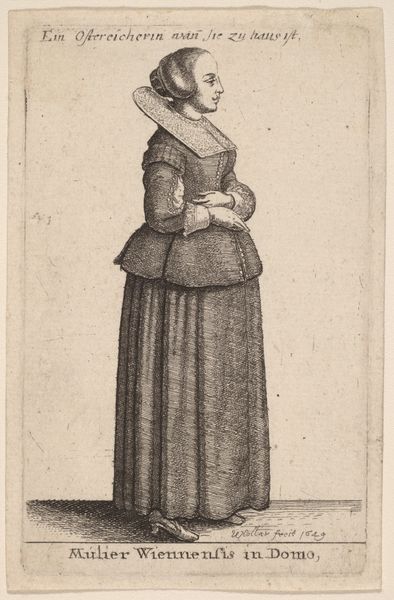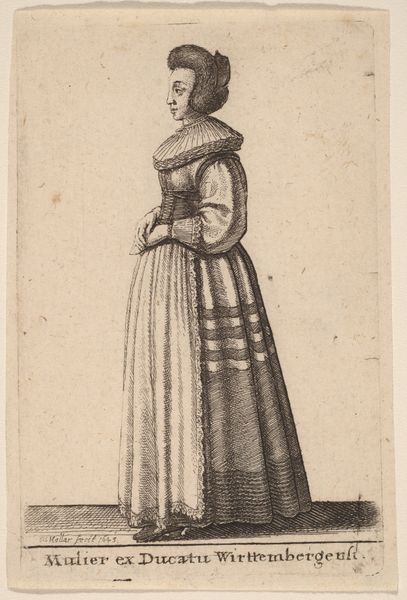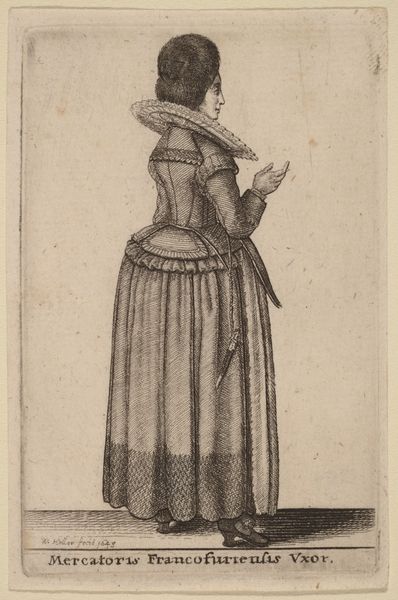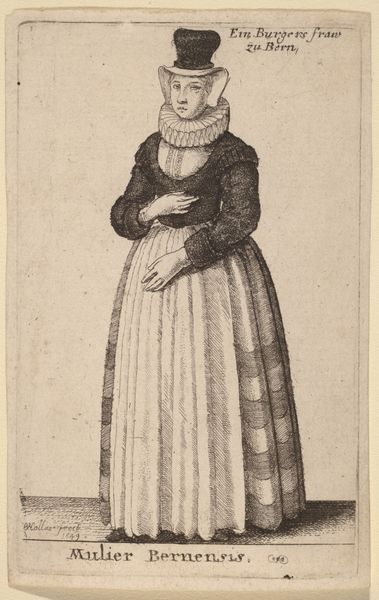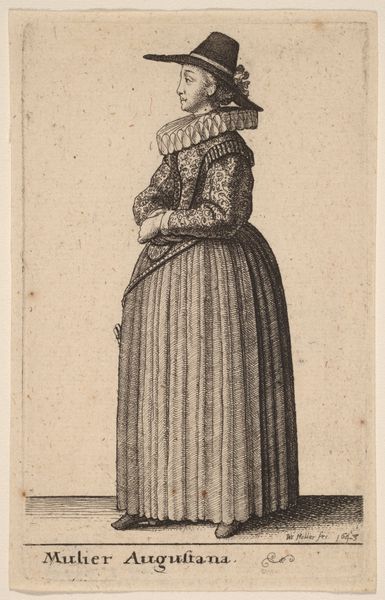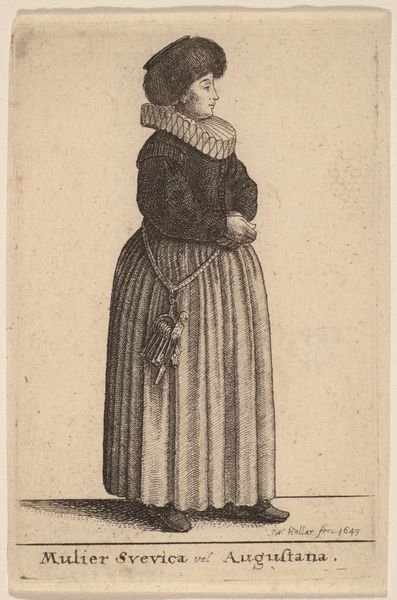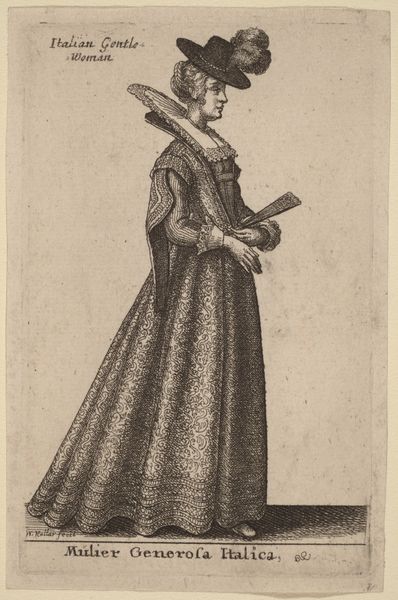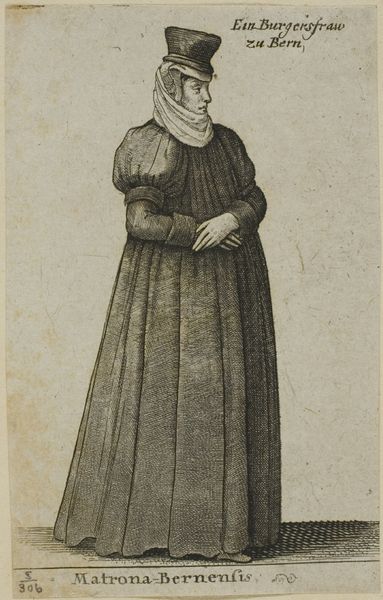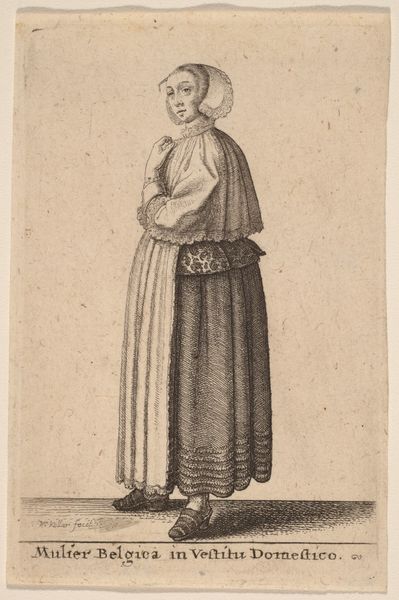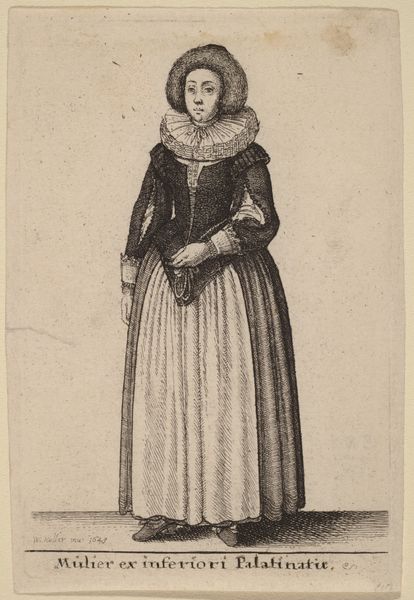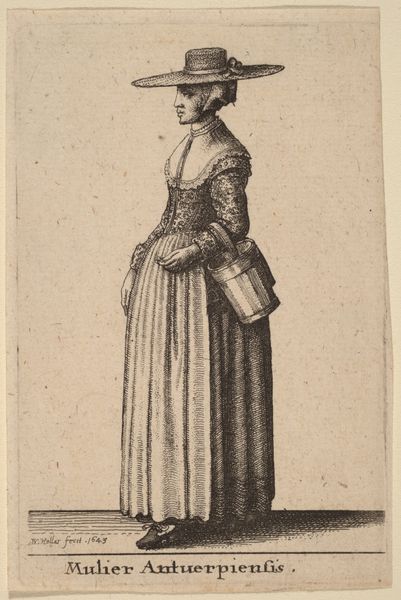
print, etching
#
portrait
#
baroque
# print
#
etching
#
figuration
#
genre-painting
Copyright: National Gallery of Art: CC0 1.0
Editor: This is "Mulier Franconiensis," an etching by Wenceslaus Hollar from 1643. I'm really struck by her direct gaze and the level of detail in her clothing. How would you interpret the imagery presented here? Curator: It’s a potent image, isn't it? Immediately, I’m drawn to how this portrait uses clothing and gesture as signifiers. The “Mulier Franconiensis”, or Franconian Woman, is carefully staged. Hollar uses attire, with its distinct regional character, as a symbol of cultural identity. Editor: So, her clothes aren't just clothes? Curator: Precisely. Each element – the large ruff collar, the cut of the jacket, even the hairstyle – speaks to her belonging to a specific place and time. Notice how her hands are positioned. It's a gesture of modesty but also control. What psychological impact does her gaze, combined with these elements, have on you? Editor: I guess it projects a sense of both self-awareness and social constraint, perhaps? There’s a tension there. Also, the fact it's a print. Were these images widely circulated? Curator: Yes, prints like these acted as visual records, disseminating information about different cultures and social classes across Europe. They shaped perceptions, reinforcing or challenging stereotypes. This image becomes a lasting symbol. Consider how she's remembered, not just as an individual, but as a representative. Editor: That’s fascinating, it makes you think about how we construct identity, and how we consume and circulate those constructions even now. It’s more complex than just a portrait; it’s a study of representation. Curator: Indeed! Seeing her not only as a woman but as a carefully constructed emblem adds layers of meaning, inviting us to consider the power of imagery in shaping cultural memory.
Comments
No comments
Be the first to comment and join the conversation on the ultimate creative platform.
